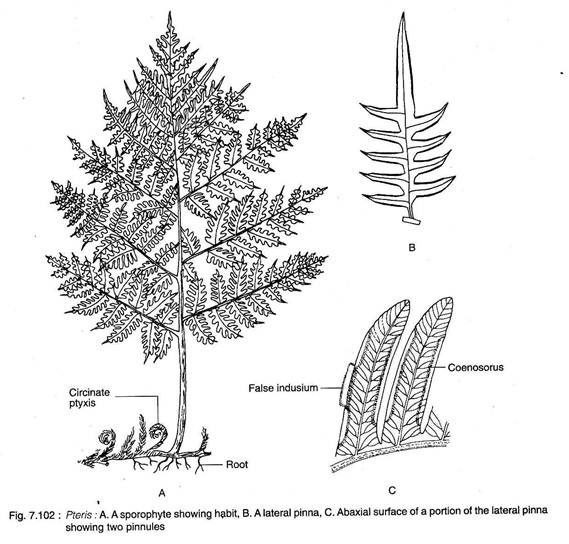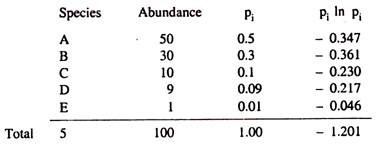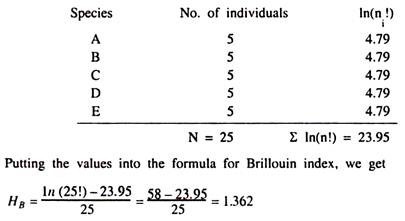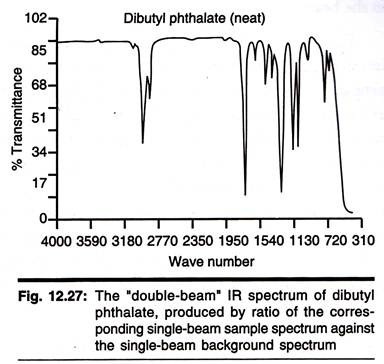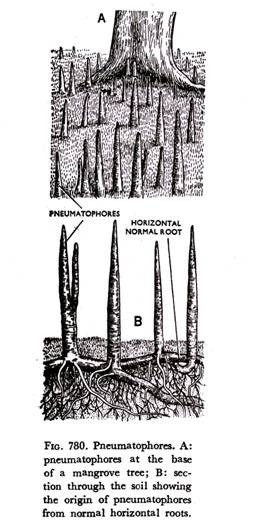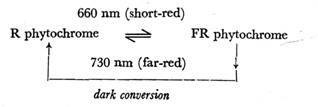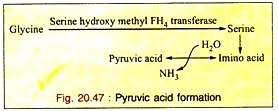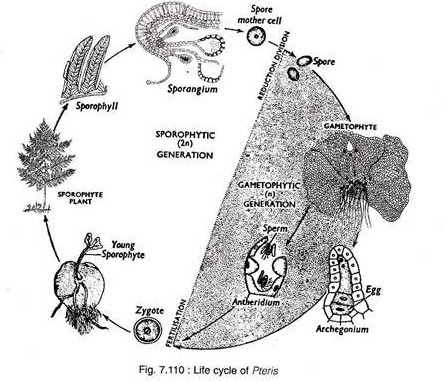In this article we will discuss about the structure and reproduction in Pteris.
Structure of Pteris:
Sporophyte:
The main sporophytic plant body is differentiated into root, rhizomatous stem and leaves (Fig. 7.102A).
1. Root:
The primary root is ephemeral, and is replaced by a large number of adventitious roots developed all over the surface of the rhizome. The roots are small and branched (Fig. 7.102A).
The T.S. of root shows an outer piliferous layer, a cortex and a central stele. The cortex is differentiated into a parenchymatous outer cortex and a sclerenchymatous inner cortex. The stele is protostelic with diarch and exarch xylem.
2. Rhizome:
The rhizome or stem may be creeping (P. grandiflora) or erect (P. cretica, P. vittata) which may or may not show branching. The rhizome is differentiated into nodes and internodes and its entire surface is covered with scales. The growing point of rhizome is covered with ramenta.
Anatomically, the rhizome shows an outer single-layered epidermis, a few-layered thick sclerenchymatous hypodermis and a broad parenchymatous cortex with a diversified stelar organisation (Fig. 7.103). It may be solenostelic (P. grandiflora, P. vittata) or dictyostelic.
Even the diversity is noted in different regions of the rhizome in the same species. For example, in P. biaurita, the lower part of the rhizome shows mixed protostele which becomes siphonostelic a little up and exhibits polycyclic dictyostele near the apex.
In general, the stele is made up of a number of meristeles forming two rings (Fig. 7.103). The inner ring consists of 2 to 3 large meristeles and the outer ring comprises of a number of small meristeles. Each meristele has a band or platelike mesarch xylem surrounded by phloem. Each stele is bounded by its own endodermis.
3. Leaf:
The leaves are borne on the upper surface of the rhizome. When young the leaves are spirally coiled and show circinate vernation that is typical of true ferns (Fig. 7.102A). The leaves are unipinnately or multipinnately compound or decompound with a long rachis (Fig. 7-.102B).
The pinnae are small near the base as well as towards the apex, while they are large towards the middle. The pinnae are very often coriaceous. All leaves are fertile, bearing sori along the ventral margin of pinnae, except the apices of the segments.
The rachis is traversed by a single C/U/ V-shaped leaf trace. The lamina is bifacial, hypostomatic. Mesophyll cells may or may not be differentiated. A concentric vascular bundle with distinct bundle sheath is present in the midrib.
Reproduction in Pteris:
Pteris reproduces by means of spores.
Spore-Producing Organ:
Pteris is a homosporous fern. The sorus of Pteris is called coenosorus (Fig. 102C). Coenosori are marginal, borne continuously on a vascular commissure connected with vein ends. Thus the sporangia of Pteris form a continuous linear sorus along the margin, hence the individuality of sori is lost.
The coenosori are protected by the reflexed margin (false indusium) of the pinnae. Sori are of mixed type intermingled with many sterile hairs in between the sporangia (Fig. 7.104).
Development of Sporangium:
The development of sporangium in Pteris is of leptosporangiate type (Fig. 7.105A-G). A single superficial cell of the receptacle functions as the sporangial initial which divides transversely to produce an upper cell and a lower cell.
The lower cell does not take part in sporangium development, while the upper cell, by intersecting oblique walls, gets differentiated into an apical cell with three cutting faces. The apical cell cuts off two segments along each of its three cutting faces.
The apical cell divides periclinally to form an outer jacket initial and an inner tetrahedral archesporial cell. The jacket initial divides, anticlinally to form a single-layered jacket of the sporangium. The archesporial cell further divides periclinally to form an outer tapetal initial and an inner primary sporogenous cell.
The tapetal initial by one periclinal and several anticlinal divisions forms two-layered tapetum. The primary sporogenous cell divides to form 12 spore mother cells. The spore mother cells divide meiotically to produce haploid spores, while the tapetal cells disorganise and provide nutrition to the spores.
Structure of a Mature Sporangium:
A mature sporangium has a long stalk that terminates in a capsule (Fig. 7.106).
The jacket of the capsule is single-layered, but with three different types of cells:
(1) A thick walled vertical annulus incompletely overarches the sporangium,
(2) A thin-walled radially arranged stomium, and
(3) Large parenchymatous cells with undulated walls.
The capsule contains many spores. All spores are structurally and functionally alike; hence Pteris is a homosporous pteridophyte. Spores are triangular in shape with trilete aperture, bounded by two walls. The outer wall, exine, is variously ornamented.
The sporangium dehisces transversely along the stomium due to the shrinkage of annular cells (Fig. 7.104). The spores are dispersed through air to a moderate distance.
Gametophyte:
The spores germinate after falling on a suitable substratum. Initially the spore wall (exine) ruptures and the inner contents come out in the form of a germ tube and subsequently by a transverse division in the germ tube forms the first rhizoid and the first prothallial cell. The prothallial cell divides to form a small filament having an apical terminal cell with two cutting faces.
The apical cell further divides and a spathulate prothallus is formed first. Finally a mature prothallus is formed which becomes cordate, dorsiventrally flattened, aerial and photosynthetic (Fig. 7.107).
The prothallus is made up of parenchymatous cells which are single-celled thick towards the margin and many-celled thick towards the centre. The growing point are located in the apical notch. Rhizoids are formed over the ventral surface.
The prothallus is monoecious, protandrous. Antheridia appear first and are confined to the basal central or lateral regions among the rhizoids. Archegonia develop near the apical notch..
Antheridium:
A superficial cell on the ventral surface of the prothallus functions as an antheridial initial (Fig. 7.108A-I). This divides transversely to form an outer upper cell and an inner lower cell (first ring cell). Due to the higher turgor pressure in the upper cell, the cross-wall between these two cells bulges down and as a result the upper cell becomes dome-shaped.
Then the upper cell divides by an arched periclinal wall to form a dome cell and the primary androgonial cell. The dome cell further divides transversely forming a cover cell and a second ring cell.
Then the cover cell and two ring cells by anticlinal divisions form a single-layered jacket of the antheridium. The primary androgonial cell divides repeatedly to form 20-25 androcytes and eventually each androcyte metamorphoses to form a multiflagellated coiled antherozoid.
Archegonium:
The development of archegonium in Pteris is similar to that of Ophioglossum (Fig. 7.100).
A mature archegonium of Pteris consists of a 5-6 celled projecting curved neck, a neck canal cell, a ventral canal cell and an egg (Fig. 7.110).
Fertilisation:
The antheridium at maturity absorbs water and swells. Due to the increase in pressure within the antheridium the cover cells split apart releasing the antherozoids in a thin film of water present on the surface of the prothallus.
At the same time the ventral canal cell, the neck canal cell and the neck cells at the top disintegrate forming an open passage for the antherozoids to come towards the egg and, eventually, one of the antherozoids fuses with the egg to form the zygote.
New Sporophyte (Embryo):
Like other leptosporangiate ferns, in Pteris the first division of the zygote is vertical (Fig. 7.109A) followed by a second transverse division resulting in the formation of a quadrant (Fig. 7.109B). Further a 32-celled embryo is formed due to further divisions of the quadrant.
The differentiation of embryo begins at this 32-celled stage. No suspensor is formed; the hypobasal cells form stem apex and foot, while epibasal cells form cotyledon and root (Fig. 7.109C). With the development of embryo, the venter of the archegonium forms a protective layer, called catyptra, around the embryo.
In the young embryo the root and cotyledon grow more rapidly than the shoot. The root pierces the prothallus and establishes the sporeling in the soil. Later, the first leaf develops.
The life cycle of Pteris is shown in Fig. 7.110.
